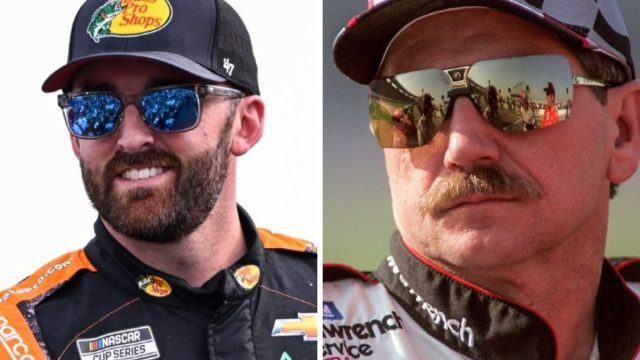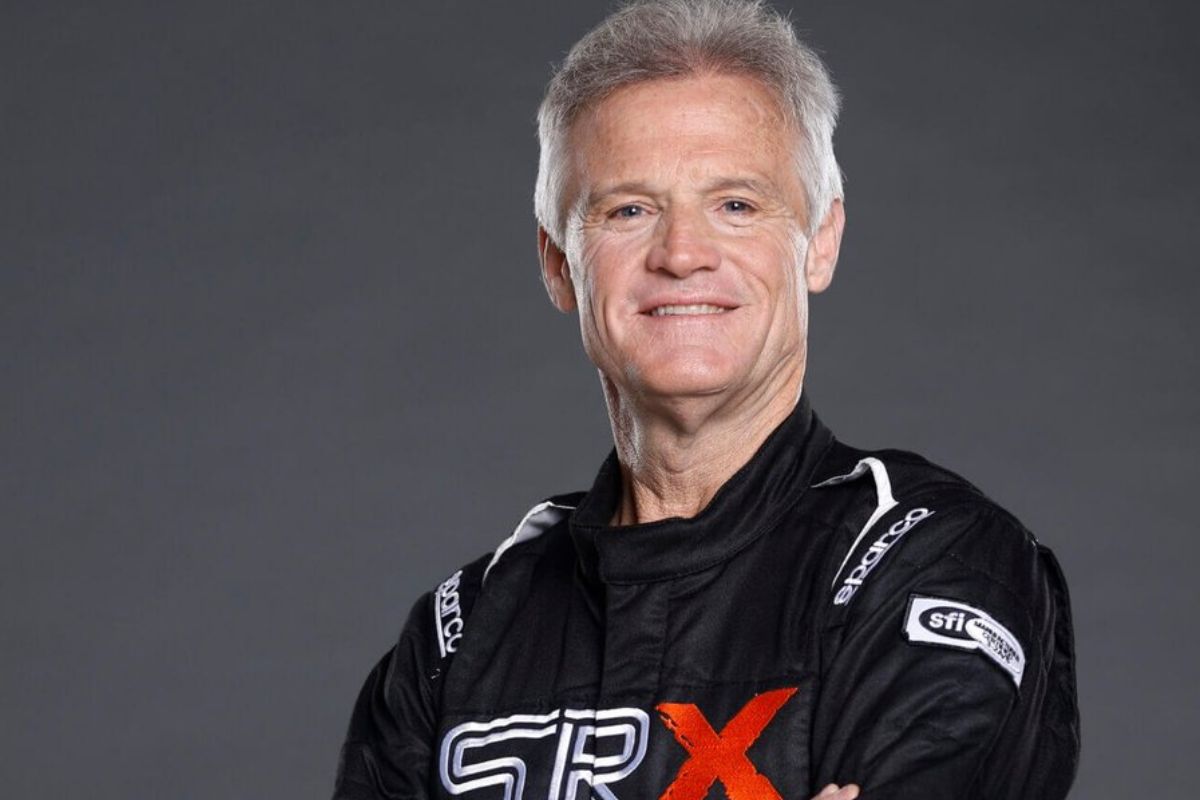Austin Dillon’s Richmond Win Reflects Dale Sr.’s Tactics: Austin Dillon‘s recent success at Richmond has sparked intriguing parallels to Dale Earnhardt Sr.‘s formidable racing strategies, as noted by NASCAR veteran Kenny Wallace. This victory highlights Dillon’s aggressive driving style and reflects a broader evolution in NASCAR culture, where the pursuit of success often eclipses traditional notions of sportsmanship. Wallace’s insights into the significance of team dynamics and the legacy of aggressive tactics prompt a deeper examination of what this win signifies for Dillon’s career and the sport itself. What implications might this have for future races and the drivers who seek to emulate this winning approach?
Key Highlights
- Austin Dillon’s aggressive driving style mirrors the tactics of Dale Earnhardt Sr., emphasizing intimidation and tactical ferocity on the track.
- Incidents at Richmond, including collisions with Logano and Hamlin, highlight Dillon’s willingness to assert dominance similar to Earnhardt’s legacy.
- NASCAR veteran Kenny Wallace notes that Dillon’s performance is supported by strong team cohesion and communication, essential for success in critical races.
- Dillon faced significant pressure with only two top-10 finishes before Richmond, intensifying the stakes for Richard Childress Racing and key sponsors.
Kenny Wallace’s Comparison to Dale Earnhardt Sr.
Kenny Wallace’s comparison of Austin Dillon’s aggressive racing tactics to those of the legendary Dale Earnhardt Sr. highlights a notable evolution in the sport’s competitive dynamics and the enduring legacy of the ‘Intimidator.’ This analogy not only emphasizes the environment of modern NASCAR but also reveals a fundamental shift in how drivers approach victory. Dillon’s bold tactics at Richmond Raceway, where he collided with both Joey Logano and Denny Hamlin in a desperate bid for supremacy, evokes memories of Earnhardt’s infamous willingness to push the limits of racing etiquette.
INSANITY ON THE FINAL LAP AT RICHMOND.
AUSTIN DILLON WINS AFTER CRASHING JOEY LOGANO AND DENNY HAMLIN. #NASCAR pic.twitter.com/mpQKcK236J
— NASCAR on NBC (@NASCARonNBC) August 12, 2024
Earnhardt, revered for his aggressive style, often left competitors bewildered and intimidated. His capacity to dominate through sheer force of will and tactical ferocity set a precedent in NASCAR that continues to resonate. Wallace’s commentary suggests that Dillon, while forging his path, may be harnessing a similar ethos, embracing a cutthroat mentality that is crucial in a sport where the margin for error is thin.
“The driving by Austin Dillon matches that team. Let’s go back. Anytime the late great Dale Senior did something like that… we watched Senior do it. You saw Chocolate Myers (the fueler on Dale Earnhardt Sr.’s car), and the Flying Aces (Dale Earnhardt Sr.’s pit crew)… they were there to back up Dale Senior.” – kenny
This comparison also reflects a broader trend in NASCAR, where the pursuit of victory increasingly outweighs traditional decorum. Dillon’s actions, representative of this shift, challenge the narrative surrounding sportsmanship, as drivers must navigate the delicate balance between aggression and respect.
Kenny Wallace’s Reflections on Dillon’s Driving
Austin Dillon’s driving style, particularly during the Richmond race, has garnered considerable attention, prompting reflections from Kenny Wallace that draw parallels to the aggressive tactics of Dale Earnhardt Sr. In a frank discussion on his YouTube channel, Wallace analyzed Dillon’s actions, noting that while he believes Dillon’s handling was inappropriate, it echoed the behaviors exemplified by the legendary Earnhardt.
“So what I see right there…I’m old enough that I see shades of the past. Austin Dillon was wrong.”
“I’M GOING TO ADMIT IT WAS WRONG, BUT WE WATCHED DALE SENIOR DO THAT TO TERRY LABONTE AT BRISTOL. THE FLYING ACES WERE THERE TO BACK HIM UP, AND THAT’S WHAT YOU SAW. YOU SAW THAT TEAM; THEY DIDN’T CARE.” – Kenny
Wallace emphasized the unity and support that characterized Earnhardt’s team during similar situations, which he believes is reflected in Dillon’s current crew.
Wallace articulated three key observations regarding Dillon’s driving style:
- Aggressive Actions: Dillon’s approach mirrors that of Earnhardt, demonstrating a willingness to assert dominance on the track, even at the risk of penalties or controversy.
- Team Support Dynamics: Just as Earnhardt had the steadfast backing of his pit crew, especially the Flying Aces, Dillon’s team appears prepared to rally around him in the face of criticism, highlighting the importance of team cohesion in NASCAR.
- Historical Context: Wallace pointed out that NASCAR has seen similar tactics before, indicating that while Dillon’s actions may be scrutinized, they are not unprecedented within the sport’s storied history.
The Pressure on Austin Dillon and Team Dynamics
Amidst the high-stakes atmosphere of NASCAR, the mounting strain on Dillon and his team highlighted the vital intersection of performance and team dynamics in a sport where success is often measured in fractions of a moment. The tension was palpable as Dillon entered the race with only two top-10 finishes for the year, compounded by Richard Childress Racing’s long absence from victory lane at Richmond since 2013. The presence of key sponsors, particularly John L. Morris of Bass Pro Shops, further intensified the stakes, as a win was fundamental for Dillon’s playoff hopes.
“If you bump somebody in Formula 1, you’re out of the race. If you do that in IndyCar you’re out of the race, However, there’s a lot of things I saw in this race. The owner of Bass Pro Shops…he was there. So Austin Dillon had to win the race or else he was not going to be in the playoffs.” – kenny

The dynamics within Dillon’s team were essential to overcoming this tension. The interplay between driver confidence, tactical communication, and the execution of race strategies played a noteworthy role in securing the victory.
Dillon’s ability to navigate these tensions, while leveraging strong team dynamics, ultimately manifested in a performance evocative of Dale Earnhardt Sr. This win not only alleviated immediate strain but also set a foundation for future success within the competitive landscape of NASCAR.
Upcoming Race and Coverage Details
Following a notable victory at Richmond, the focus now shifts to the upcoming race at Michigan International Speedway, where Dillon and his team will face new challenges in their quest for playoff progression. The Michigan race, scheduled for August 18, promises to be a fundamental turning point in the season, as teams refine their tactics and adapt to the unique characteristics of the two-mile oval.
As the race approaches, fans and analysts similarly will be keenly observing several key elements:
- Tire Management: With Michigan’s high-speed layout, tire degradation can markedly impact performance over the 200-lap race. Teams must strike a balance between speed and tire conservation to maintain their competitive edge.
- Pit Strategy: Given the potential for varying cautions throughout the race, tactical pit stops will be essential. Decisions made during these moments could dictate the outcome, particularly as teams jockey for position in the playoff standings.
- Driver Adaptability: Each driver’s ability to adapt to changing track conditions will be essential. Dillon’s recent success at Richmond may provide momentum, but the Michigan track presents a different set of challenges requiring keen adaptability.
The race will commence at 2:30 PM ET, with live coverage available on the USA Network and NBC Sports. Furthermore, fans can tune in to MRN and SiriusXM NASCAR Radio for thorough radio coverage.
News in Brief: Austin Dillon’s Richmond Win Reflects Dale Sr.’s Tactics
Austin Dillon’s recent victory at Richmond serves as a poignant reminder of the aggressive tactics that defined Dale Earnhardt Sr.’s legacy.
Kenny Wallace’s observations highlight the evolving culture within NASCAR, where the pursuit of victory often supersedes traditional notions of sportsmanship.
This win not only emphasizes the significance of team cohesion but also reflects a broader shift towards a more competitive spirit evocative of racing’s storied past.
The implications of such a transformation warrant further examination in the context of future NASCAR events.
ALSO READ: Richard Childress’ Radio Call Sparks NASCAR Outrage After Austin Dillon’s Controversial Win



